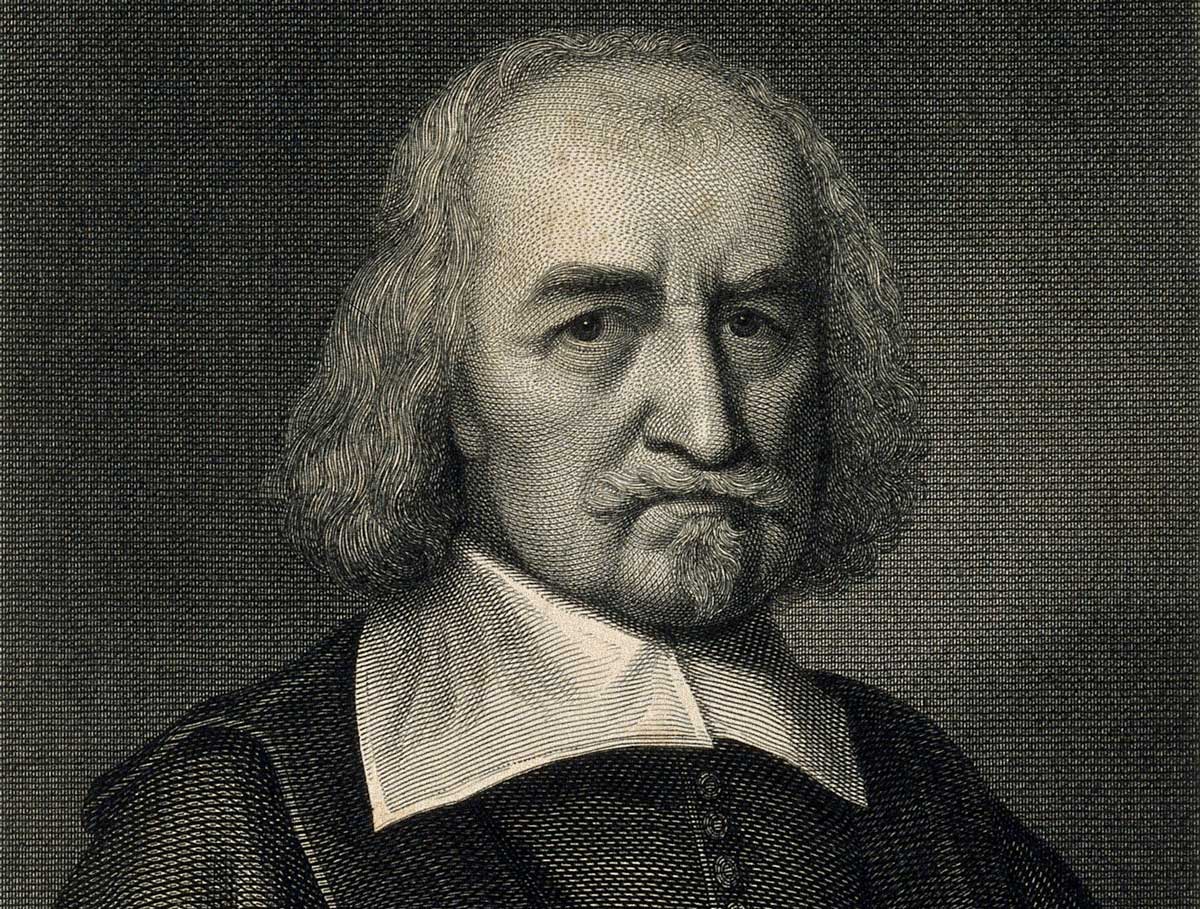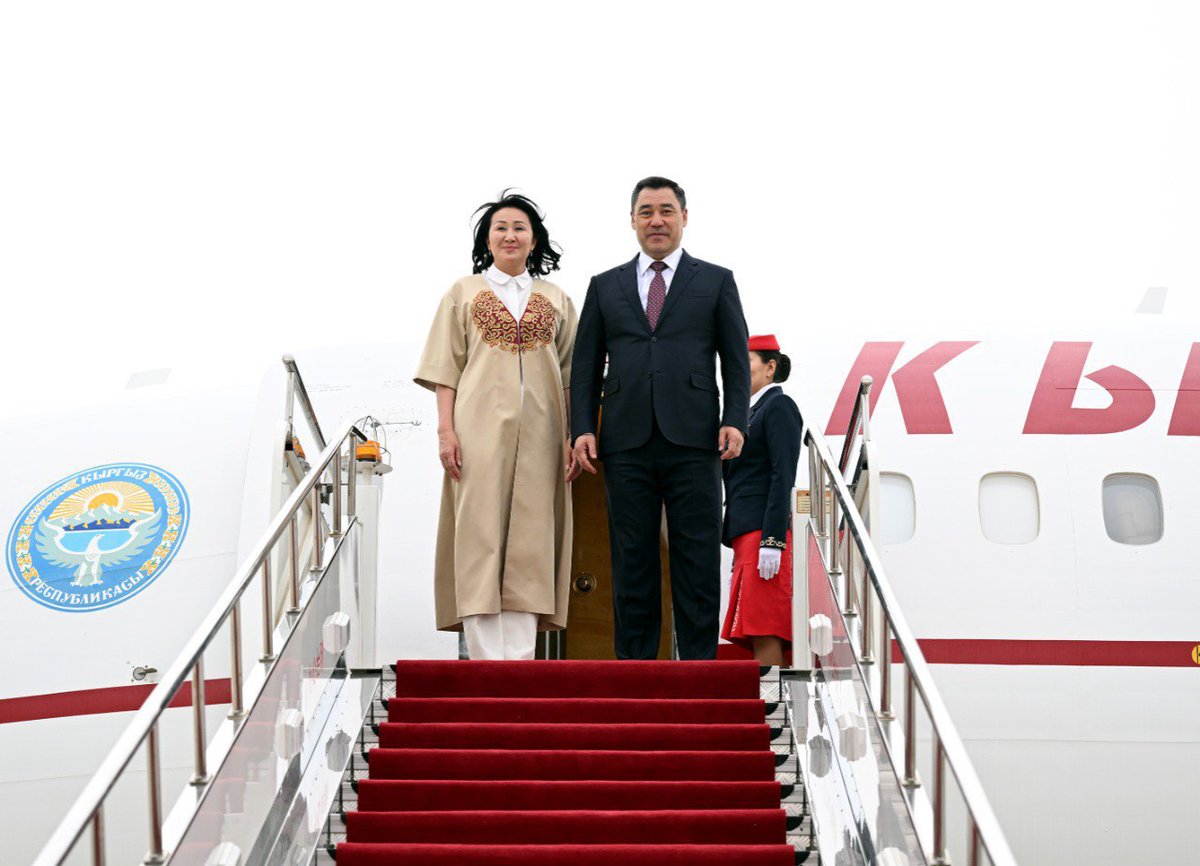🇯🇵 By mid-May 1945 it was clear to all who wished to see: Japan was on the brink of surrendering. The real purpose of the decision to drop the atomic bomb on Japanese cities was not to win the war, but rather to shape the contours of the post-war world. #G7Summit #Hiroshima
In his 1928 opus “The Open Conspiracy: Blueprint for a World Revolution” H.G. Wells, the Fabian Society leader, called for the establishment of a “world government” which would supersede the nation-state as the primary form of human social and political existence. 

This “Utopian” scheme, as Wells himself dubbed it, probably had little hope of success, except under conditions of raw terror, where a frightened population might come to feel that only in the womb of such a “world government” would there be any security.
With the dropping of the atomic bombs on Hiroshima and Nagasaki in August 1945, such a condition, it was felt by Wells’ devotees, had been brought about.
On 18 August 1945, the Glasgow Forward published “The Bomb and Civilisation,” the first known recorded comment by Bertrand Russell on atomic weapons that he began composing the day Nagasaki was bombed. Russell was a compatriot of H.G. Wells in the “world commonwealth” project. 



In this work, Russell wrote: “The prospect for the human race is somber beyond all precedent... Either war or civilization must end, and if it is to be war that ends, there must be an international authority with the sole power to make the new bombs.”
“The power of the US in int’l affairs is, for the time being, immeasurably increased,” Russell continued. “If America were more imperialistic there would be another possibility, less Utopian and less desirable, but still preferable to the total obliteration of civilized life.”
“It would be possible for Americans to use their position of temporary superiority to insist upon disarmament, not only in Germany and Japan, but everywhere except in the US, or at any rate in every country not prepared to enter into a close military alliance with the US...”
“During the next few years, this policy could be enforced; if one or two wars were necessary, they would be brief, and would soon end in decisive American victory.”
Russell’s comments were undoubtedly aimed at encouraging the very thing he expressed his skepticism about.
Russell’s comments were undoubtedly aimed at encouraging the very thing he expressed his skepticism about.
While Bertrand Russell’s hatred of the United States as a nation-state was almost visceral, were a US government prepared to become the center of a new Roman Empire, dictating policy to the world, he would stifle his revulsion and sign on to the project in that form.
Indeed there were, in late 1945, already people in Washington intent on creating just such a solution. The totally unnecessary, & absolutely criminal, dropping of the atomic bomb on #Hiroshima & #Nagasaki was their attempt to impose this Wellsian nightmare on an unwitting world. 

The bomb project had been initiated by Roosevelt on the basis of an appeal by Einstein. Einstein, aware of Nazi work on developing such weapons, had been urged by Szilard who played on Einstein’s fears, to write a letter to Roosevelt urging him to begin work on an atomic weapon. 

Szilard, a Hungarian physicist and a devotee of Wells, had worked his way into Einstein’s confidence. In 1928 Szilard had read Wells’ Open Conspiracy and waxed enthusiastic. By 1929 he had traveled to London to meet Wells and negotiate the rights to publish his works in Europe. 

Szilard himself worked on a scheme to realize Wells’ vision of a “world government” controlled by a chosen “scientific elite” which he called the Bund. Although formulating this proto-fascist vision at an early age, Szilard bandied ideas about in different forms until his death.
Truman had replaced Henry Wallace as FDR’s Vice President prior to the 1944 elections, through the machinations of the southern Democrats who hated Roosevelt’s New Deal as well as his envisioned post-war Grand Design. They knew that Roosevelt would not survive a fourth term. 

By the time Truman was briefed on the Manhattan Project the bomb was almost ready for testing. His growing realization of the power & capability of the new weapon gave him the means to accomplish the task for which he had been chosen—to dismantle Roosevelt’s post-war design. 

The power of this new weapon had to be demonstrated in a devastating manner, to convince all nations to accept the straitjacket of “world government.” The Manhattan Project had been essentially an Anglo-American project from the start.
The test in Alamogordo, New Mexico, in July 1945, produced results beyond anyone’s imagination. As reports streamed back to Washington, the mood was almost ecstatic among the Utopians. The issue now became whether to use it—and, if so, against whom?
https://twitter.com/atomicarchive/status/1416066236929257474
With the surrender of Nazi Germany already a fact, Japan was really the only candidate. But what if the Japanese also surrendered before the bomb was actually used in war, as all indicators were showing they intended to do?
Testing the bomb in a real-time situation required, therefore, delaying such a surrender for as long as possible in order to use the bomb to end the war—and demonstrate in an unequivocal and stark, terrifying manner, the raw power now possessed by the United States.
Truman was not interested in meeting with Stalin until he had a successful test of the atomic bomb to use as a bargaining chip in such a meeting. Plans for the bombing of Japan were already well underway when the Alamogordo test took place.
There was a growing feeling that with the Anglo-Americans retaining sole possession of the bomb, the post-war period would indeed become something of an Anglo-American Century, as Bertrand Russell would call for in his piece later in 1945.
General Groves was committed to “an American-administered Pax-Atomica—an atomic league of nations, founded upon the West’s supposed technological superiority and the secret, preclusive monopoly of atomic raw materials.” 

Anything that would permit the Japanese to surrender before the use of the atomic bomb in the war against Japan was, therefore, to be squelched. The envisioned entry of the Russian forces into Manchuria had therefore to be delayed for as long as possible.
By the time of the Potsdam meeting Japan was asking Russia, with which it still had a neutrality treaty, to help it get out of the war. But Truman was not ready for peace. Arriving at Potsdam, the US was already taking measures to delay Russian entry into the war in the Pacific. 

At Potsdam, Churchill was informed of the successful test. British Chief of Staff Field Marshal Sir Alan Brookesby wrote that Churchill “was completely carried away. It was no longer necessary for the Russians to come into the Japanese war.”
“the new explosive alone was sufficient to settle the matter. Furthermore, we now had something in our hands which would redress the balance with the Russians.”
By this time, the Interim Committee had decided that the bomb would be used, without warning, on a Japanese war plant, preferably in the vicinity of an area in which many Japanese workers were living, for maximum psychological effect.
The decision to bomb was, however, met with considerable resistance. Leo Szilard was perhaps more upset than anyone. He feared that the use of the atomic bomb in combat threatened to set off an arms race which would upset his plans for using it to establish a “world government.”
Although Gen. MacArthur wasn’t informed of the existence of the atomic bomb until five days before it was dropped on Hiroshima, he had already sent his air force chief, Maj. Gen. George Kenney, to Washington to explain his view that the Japanese were close to surrender. 

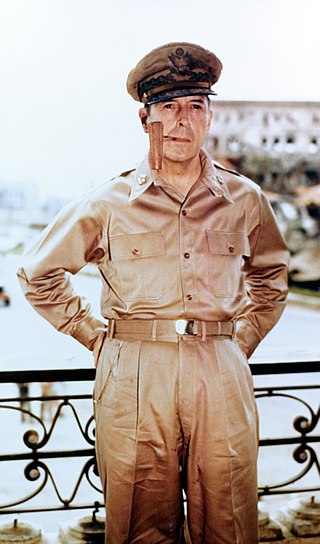

MacArthur, until his death, insisted that bombing Hiroshima and Nagasaki had no military value whatsoever. Truman’s Chief of Staff, Adm. William Leahy, continually insisted that the Japanese were on the brink of surrender. 

Leahy would later say: “They went ahead and killed as many women and children as they could, which was just what they wanted all the time.” A Survey concluded that Japan would likely have surrendered in 1945 without atomic bombing, Soviet declaration of war, or a US invasion.
On August 6 at 8:16 Enola Gay dropped “Little Boy,” with a yield equivalent to 12,500 tons of TNT, on Hiroshima, with a population of 290k civilians and 43k soldiers. The death toll was in the realm of 100,000, but many more would die soon after from the effects of the bombing.
On Aug. 9, “Fat Man” was dropped on Nagasaki, with 70,000 dead calculated by the end of 1945 and a total of 140,000 dead within the next five years. On hearing of the successful bombing of Hiroshima, Truman commented, “This is the greatest thing in history!”
Reports of the terrible facts and consequences of the atomic bombings—most especially, author John Hersey’s “Hiroshima,” which filled the August 1946 issue of The New Yorker magazine and sold hundreds of thousands of copies—had a strong impact on the American public. 

A steady stream of criticism of the bombing came from key religious leaders in the US. The effect of what James Conant derided as “this type of sentimentalism” moved Conant—now president of Harvard—to ask his friend Harvey Bundy to get Secretary of War Stimson to counterattack. 



Conant agreed with Bertrand Russell that the demonstration of the atomic bomb in a war situation had been essential to force the world into a control regime. But the American citizen had to be “convinced” by a counter-story on Japan. 

Stimson undertook the task of providing the “cover-up” for the atom bomb decision. After discussions with Conant, Harvey Bundy drafted a number of “pointers” to be included: namely, that the bomb decision was primarily ordered with the thought that it would save American lives.
That no major person in authority thought that Japan would surrender on terms acceptable to the Allies; that the Interim Committee had rejected targets “where the destruction of life and property would be the very greatest”;
That the committee had discussed “intensively” whether the bomb should be used at all and had also considered the possibility of a demonstration prior to its use in war. He wanted to downplay any inference that the bomb played any role in US relations with the Soviet Union.
With “old Bundy’s” notes in hand, “young Bundy”—who later, as National Security Adviser to Kennedy and Johnson, would help to maneuver these Presidents into the jungles of Vietnam—went to work on the draft.
Groves and others who would present Truman’s draconian nuclear control plan to the UN had their say in the draft. Groves underlined the lie: that the dropping of the bomb shortened the war by months & saved many human lives which the planned invasion of Japan would have exacted.
Bundy so exaggerated the figures that it stated twice that dropping the bomb had saved over a million lives. The best estimates given to Gen Marshall of the possible casualty rates of US forces in a full-scale invasion were always 40-46k. The big lie just kept getting bigger.
Three policies emerged for dealing with the advent of the nuclear age. Bertrand Russell and his Utopian co-thinkers demanded the United States get ready for preventive nuclear war against the Soviet Union, to enforce a US-British nuclear monopoly.
The policy of Truman, and of Wall Street, was the “Baruch Plan” for world government enforcement of complete nuclear technological apartheid.
Truman appointed the aging financier Bernard Baruch, formerly head of the War Production Board during World War I, as the head of the US delegation to the UN Atomic Energy Commission, assuring a hard line on the control issue. 

Baruch’s plan demanded “swift and sure punishment” of any nation which attempted independently to develop nuclear technology and insisted that the veto power of the UN Security Council be suspended entirely in matters of atomic control.
Bertrand Russell was delighted with the Baruch Plan as the realization of his “world government” idea. The Soviet Union’s swift and complete rejection of the Baruch Plan provided a grist for Russell’s “preventive war” doctrine.
In 1949 George F. Eliot published “If Russia Strikes”, in which he called on the US to present Moscow with an ultimatum: cease research & production efforts on the atomic bomb & accept the Baruch Plan, or face a US attack that would “raze the USSR with an air atomic offensive.” 
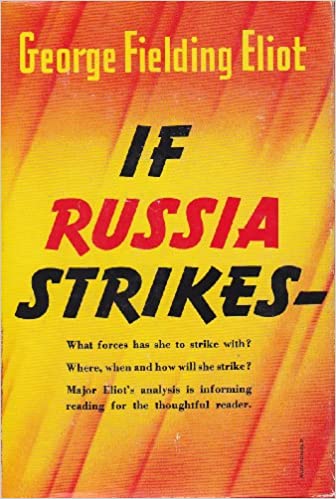
Gen. Henry H. Arnold, in a report to Stimson, asserted that the “one defense against the atomic bomb” was “to hit it before it starts.” In a 1950 speech, Navy Sec. Francis Matthews said the US should consider “instituting a war to compel cooperation for peace.” 

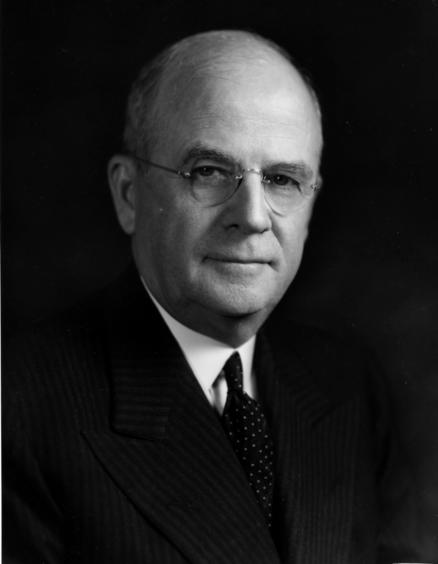

By the time of Matthews’ speech, the Soviets had eliminated the US atomic monopoly on nuclear weapons, exploding a nuclear device on the steppes of Kazakstan in August 1949. The world now entered the era of Mutual and Assured Destruction. 

The resulting “balance of terror” would now be used by the same Utopians as the argument for bringing the world into the era of world government, including Russell’s attempt during the Cuban Missile Crisis to bring the US and Soviets into an “arms control regime.”
The third post-war nuclear policy, however, and the initiative that promised to break through this controlled environment, was the “Atoms for Peace” program launched in 1953 by President Eisenhower. 

Envisioning int’l cooperation between states as the means of fostering development by peaceful uses of nuclear power, rather than the establishment of the institutional straitjacket of world police regime, Ike succeeded in engaging the Soviet Union in cooperation for development. 

In the course of that program, between 1956 and 1959, the United States concluded nuclear cooperation agreements with 40 different countries, with the Soviet Union providing nuclear power for the satellite countries of Eastern Europe.
From 1956 to 1962, the Atoms for Peace program provided research reactors, nuclear training, and fissionable material to 26 states. Later, in a similar #PeaceThroughDevelopment initiative, Reagan adopted LaRouche’s technology-sharing concept for his Strategic Defense Initiative.
The Utopians in the Reagan Admin—who included Richard Perle, Doug Feith, and Paul Wolfowitz—succeeded in sabotaging that program, creating the basis for their “comeback” under Bush. They are now intent on establishing a new Roman Empire under Anglo-American direction.
• • •
Missing some Tweet in this thread? You can try to
force a refresh

 Read on Twitter
Read on Twitter




